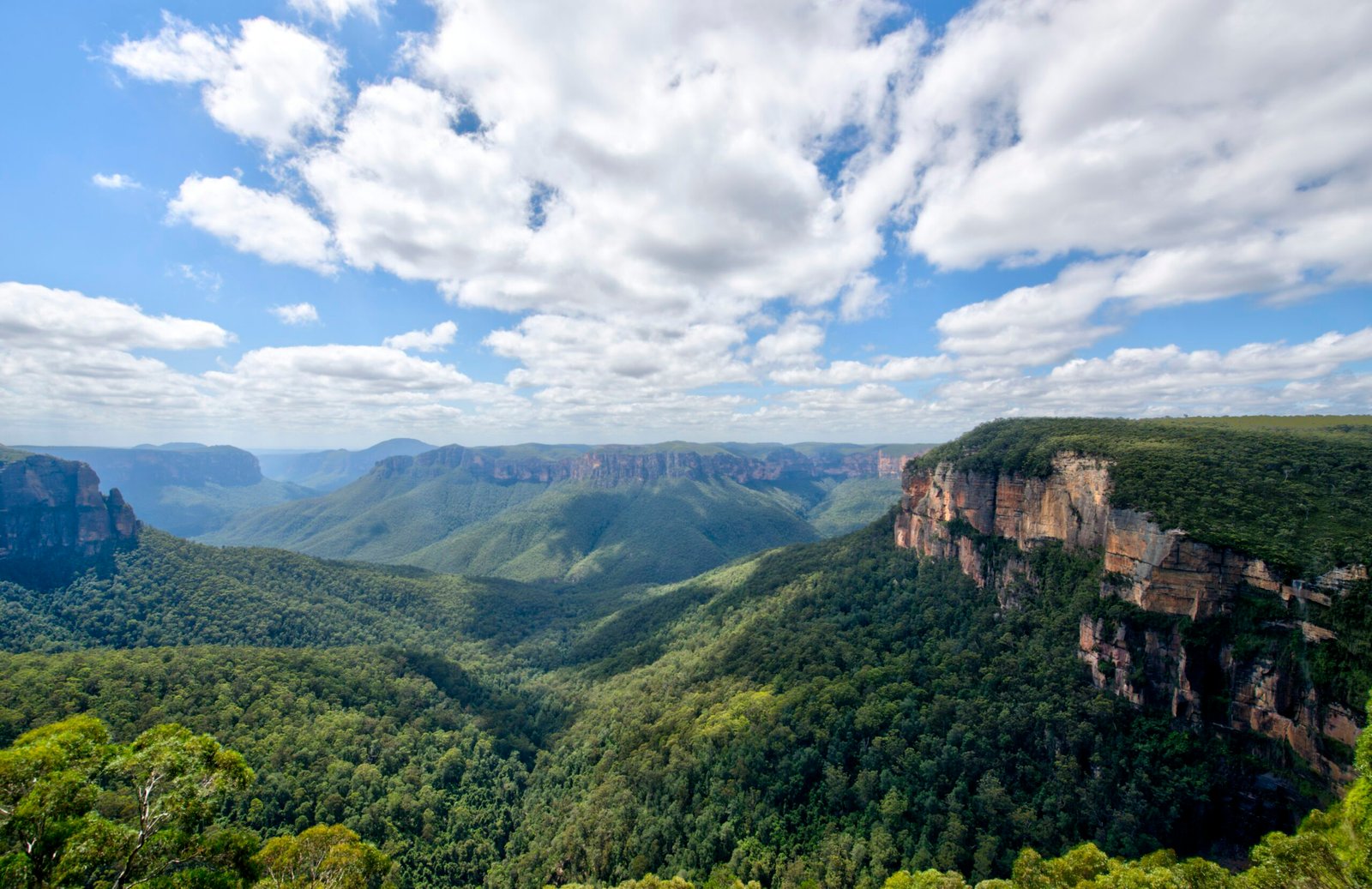Imagine a place where nature unveils its beauty at a grand scale, where lush forests drape over sweeping valleys, and where every sunset paints a masterpiece across the sky – that’s the magic of the Blue Mountains in Greater Sydney. This wonderful region offers not only breathtaking landscapes but also an excellent representation of native Australian bushland. In this article, you’ll find everything you need to know about this enchanting area, from its rich history to the thriving flora and fauna, and the myriad of exciting adventures awaiting you. So, strap on your hiking boots and get ready to explore the spectacular vistas of the Blue Mountains in Greater Sydney.
Geographical Description of Blue Mountains
The Blue Mountains offer a breathtaking escape from the hustle and bustle of city life. The majestic range stretches across eastern Australia, providing a picturesque backdrop to Greater Sydney.
Location within Greater Sydney
Situated around 63 kilometers west of Sydney’s central business district, you can reach the Blue Mountains by car, train or coach in less than two hours. Though it lies close to the metropolis, the expanse of wilderness offers a serene retreat that feels far removed from urban life.
General Physical Features
The Blue Mountains boast a wide array of geographical features, from sheer cliffs and deep gorges to densely forested valleys. The area gets its signature blue hue from the eucalyptus trees that generate a fine mist of eucalyptus oil, which refracts sunlight to give the mountains their alluring blue appearance when seen from a distance.
Major Peaks and Valleys
The distinctive sandstone terrain boasts several significant peaks including Mount Solitary, Mount Banks, and Mount Werong. Likewise, several beautiful valleys such as Jamison, Megalong, and Kanimbla valleys offer panoramic views and a wealth of outdoor activities.
History and Importance of Blue Mountains
The Blue Mountains has a significant importance in the annals of Australian history and it continues to play a vital role in modern day Australia.
Historical Significance
The Blue Mountains were once considered impassable by the early European settlers until the first successful crossing in 1813 by explorers Blaxland, Wentworth and Lawson. This opened up the western plains of New South Wales for agriculture, marking a critical point in Australia’s colonial history.
Cultural Importance
The area has been occupied by the Darug and Gundungurra people for thousands of years. The rich indigenous history, preserved in rock art, sites of significance and folklore, contributes to the area’s cultural heritage.
Implications in Greater Sydney’s Development
The successful crossing of the Blue Mountains led to the expansion of Sydney into modern day New South Wales. This opened up opportunities for agriculture, industry, and other economic pursuits, making Sydney one of the most prosperous cities in Australia.

Unique Flora and Fauna
Living up to its World Heritage status, the Blue Mountains flaunt an amazing biodiversity.
Endemic Species of Blue Mountains
With swathes of eucalyptus forest, the region is home to a wealth of endemic species. Kangaroos, wallabies, and wombats are common, while bird lovers can look out for king parrots, lyrebirds, and cockatoos.
Conservation Efforts
There are significant efforts in place to preserve the unique ecosystem. The Blue Mountains National Park forms a significant chunk of the Greater Blue Mountains Area, protected by law.
Impact of Climate Change on Biodiversity
The impact of climate change is felt here, including increased fire risk and alteration to habitats, potentially endangering the unique species that call this place home.
Blue Mountains as a UNESCO World Heritage Site
Due to its ecological, cultural, and aesthetic significance, the Blue Mountains area was listed as a UNESCO World Heritage Site in 2000.
Reasons for UNESCO Recognition
UNESCO recognition came on account of the area’s diverse and unique eucalypt vegetation, rich biodiversity, and Aboriginal significance.
Protection and Conservation Efforts
The World Heritage status guarantees the area’s ongoing protection and conservation, facilitated by stringent federal and state laws.
Benefits of World Heritage Status
World Heritage status brings increased conservation efforts, as well as boosting tourism and increasing awareness of the area’s natural and cultural value.

Hiking and Outdoor Activities in Blue Mountains
The Blue Mountains offer endless possibilities for outdoor fun, with activities suited for everyone from novices to hardened adventurers.
Popular Hiking Trails
Popular trails like the Three Sisters walk, Wentworth Falls track, and Grand Canyon track offer a mix of easy to challenging treks.
Camping Locations
You can set up camp in many well maintained sites such as Euroka, Perry’s Lookdown, and Acacia Flat campgrounds.
Safety Guidelines for Outdoor Activities
Whilst enjoying your outdoor activities, always respect the environment and adhere to safety guidelines, including staying on the marked trails, carrying adequate water and food, and checking the local weather forecast.
Indigenous Australian Influence
The cultural life of the Blue Mountains is richly imbued with the history and traditions of its Indigenous inhabitants.
Aboriginal Cultural Heritage
Aboriginal groups have a deeply rooted cultural connection with the Blue Mountains. The area is home to significant sites, including ancient rock art and ceremonial grounds.
Art and Symbolism
Storytelling through art and symbolism, often depicting the intricate relationship between humans and nature, can be appreciated throughout the region.
Story of Creation
The Dreamtime stories of the aboriginal inhabitants narrate the creation of the world and the Blue Mountains, adding a spiritual dimension to the landscape.

Tourism Potential of Blue Mountains
The breathtaking beauty and cultural richness of the Blue Mountains make it a must-visit destination for tourists.
Attractions for International Tourists
The scenic vistas, hiking trails, heritage sites, and chance to encounter native wildlife make the Blue Mountains a popular destination for international tourists.
Local Tourism
Locals flock to the Blue Mountains for weekend getaways as it enables them to escape the urban bustle without having to travel far.
Impact of Tourism on Local Economy
Tourism is the backbone of the local economy, providing jobs and revenue for the region.
Transportation in and around Blue Mountains
Getting to and around the Blue Mountains is quite easy, thanks to good transport connections.
Accessibility from Greater Sydney
The Blue Mountains are easily accessible from Greater Sydney by road and rail.
Public Transportation Options
Public transport options include trains and buses, with several stations and stops distributed across the area.
Driving and Parking Information
If you prefer to drive, there are several car parks and lookouts where you can stop and soak in the views.

Local Communities and Lifestyles
Populated with cozy towns and small villages, the Blue Mountains has cultivated a vibrant and close-knit community life.
Demographics
The region is home to a mix of people, including artists, nature lovers, and those seeking a slower pace of life.
Local Economy
While tourism is the leading economic driver, the region also supports small businesses, local arts and crafts, and agricultural activities.
Community Events and Festivals
The community hosts numerous festivals and events throughout the year, celebrating everything from local music and arts to food and nature.
Climate and Weather Conditions
Due to its elevated position, the Blue Mountains experiences cooler weather than Sydney, offering a pleasant retreat during the hot Australian summers.
Seasonal Travel Advice
While the area is beautiful all year round, spring and autumn are particularly delightful. However, winter can be quite cool, and snowfall, while rare, is not unheard of.
Impact of Weather on Outdoor Activities
Weather can impact your outdoor adventures, with fog or rain sometimes causing trails to close. Prior checking and preparation can ensure an enjoyable visit.
Climate Change Impacts on the Region
The changing climate poses challenges for the Blue Mountains, with increased risks of bushfires and threats to biodiversity from erratic weather patterns and temperatures.






